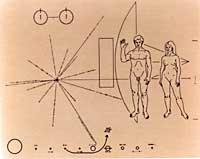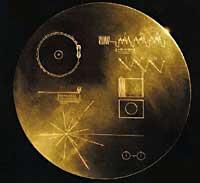Dear aliens, are you there?
2004/12/05 Galarraga Aiestaran, Ana - Elhuyar Zientzia

One of the best-known tests to contact aliens is the SETI project. SETI uses the force of computers interconnected through the Internet to search for the traces of aliens. The project is sponsored by four million people and to participate just put on the computer the screensaver of SETI. Thanks to this, this computer will also collaborate in the study of signals from space, in the hope that some hint of extraterrestrial intelligence will be collected.
The signals are collected at the Arecibo radio telescope in Puerto Rico. This radio telescope is the largest in the world, with 305 meters in diameter, allowing you to detect very weak signals. These signals are sent to the University of Berkeley, California, and distributed in a fragmented manner among participants.
If the analysis of the data was not distributed, it would be impossible to carry out the project, since there is no computer capable of doing so. That is why the participation of the people is necessary, and certainly that makes the project special. By the way, it shows people's interest in aliens. It should be noted that four million men and women collaborate in the SETI project and that in addition to not trying to find it, they will believe that there are aliens. Therefore, it is clear that many believe that outside the Earth there are also intelligent beings.

However, SETI has a limitation: only radio signals are studied to search for the remains of aliens. And if aliens don't send radio signals, what?
Instead of waiting, act
Without waiting for the signals to arrive from the outside, SETI and other institutions have sent messages into space so that possible aliens will know us.
In 1972, NASA ships Pioneer 1 and Pioneer 2, with plates inside. On the surface of the plates were placed images of a woman and a man with the aim of making known the human species. Five years later, the Voyager wore golden records with words of welcome in 60 languages, plus music from different eras and cultures, and some sounds created by nature and man. In addition, the records had intelligible electronic information for an advanced civilization.
However, this system encounters the same problem. Will aliens be able to interpret what is on the album? Despite the danger of misunderstanding, the Russians have also wanted to send their messages and the last submission they did in 2001. However, at least they have been more original and sent messages made by young Russians. Who knows, they are even easier to understand for aliens!
Cosmic language

In the 1960s, mathematician Hans Freudenthal attempted to invent cosmic language. The basis of this language was mathematics, as Freudenthal thought they would understand mathematics throughout the universe.
Based on this idea, two Canadian scientists have sent two mathematical messages via radio from the Russian base Evpatoriya. To be understandable, the messages themselves show how they should be read. To do this, they have put at the beginning of the messages simple symbols and notions, explaining how to relate to each other. Thanks to this, the recipient of the message receives the basis of mathematical operations. Subsequently, on this basis, an increasingly complex information, such as DNA, has been explained.
However, it cannot be enough for aliens to properly decode the information. Perhaps it is best to send the same message in all possible ways, otherwise it is difficult to get it right. For example, who knows if they have eyes or not to read human writings? Or ears to listen to music and sounds of nature?
Despite the question of intelligibility, there is another problem: the scope. How far do the messages sent from Earth arrive? Where will containers sent to space arrive before disposal? In this sense, radio waves are safer, but with distance they lose strength and can have many fluctuations along the way.

Another drawback is time. The messages that are now sent take thousands of years to travel cosmic distances and for extraterrestrials to receive and receive response on Earth will pass thousands more. Therefore, whoever now dreams of contacting aliens is better to think that the successor of one of his herenilobios can receive them; at least he will not have a chance to do so.
Despite the obstacles, alien seekers do not retreat and, as far as possible, will continue to send comprehensive, safe and powerful messages. Good luck!
Published in 7K.

Gai honi buruzko eduki gehiago
Elhuyarrek garatutako teknologia






